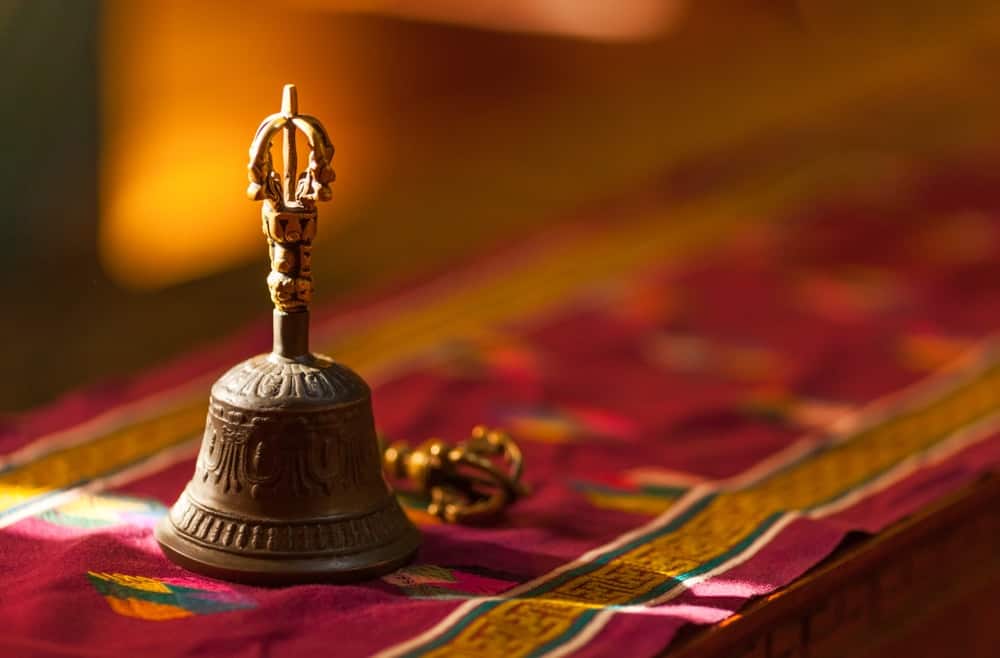
Bells date back to 2000 B.C. and were first rung in China. The Chinese rung them for worshiping, making announcements, and for alerting people during times of danger. They also spread the use of metal bells to other countries such as Japan, India, and Thailand for their practices of Buddhism and Hinduism.
The Italian bishop named Palanius was the first to use metal bells as part of Christian ceremonies. This spread among the Christian monks in Italy and throughout Europe. The Catholics built enormous and louder bells during the Renaissance period while the Gothic period ushered in embellished and massive church bells.
Basic Types
The Church Bell
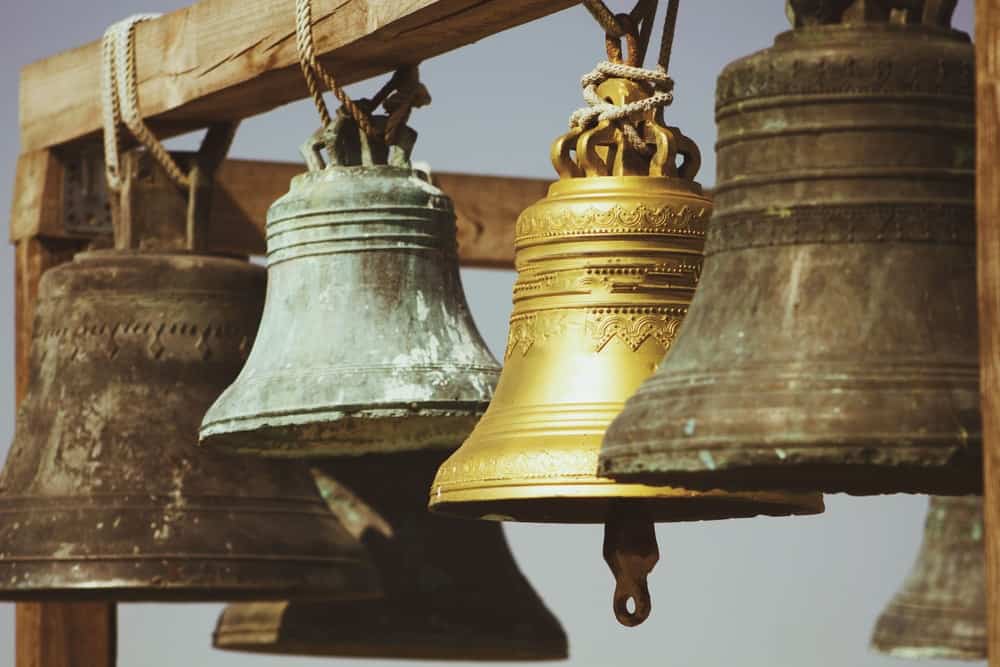
Perhaps these are most common in Christian Churches, and if you live near one or attend one regularly, you have surely heard the bell ringing. Traditionally, they were used as a call to prayer or a call to worship, but prior to modern communication, they were simply a way to call the community together for all sorts of purposes, such as weddings or funerals.
When someone says “bell,” the church bell is likely what comes to mind or, at least, its shape. You might describe it as a “cup” shape, but it widens considerably as they flare out at the bottom. Given their historical purpose, these bells are commonly hung at the top of a church tower so that the sound travels to the entire town. They are suspended from a swinging headstock that is commonly attached to a rope. When the rope is yanked on, the bell swings and bangs against the metal clapper that hangs down in the center, which will generate sound.
The Carillon

A carillon is a musical instrument that, like the church bell, is housed in the bell tower of various churches and municipal buildings. This is actually the second largest musical instrument still in existence, next to the largest pipe organs. It is usually comprised of 23 cast bronze bells with the traditional cup shape, which are most of the time controlled by a keyboard. The keys mechanically activate various levers and wires that connect to the bell’s clappers that will strike the bell.
With this setup, the performer or operator can control the intensity of notes and play melodies or chords. Concert carillons typically have a minimum of 48 bells, and while these are not super common, there are a number of notable locations, such as churches and universities, that do use them.
Hand Bells

Hand bells look like church bells on a much smaller scale. Traditionally, you will see them with a metal cup attached to something such as a leather handle. To play them, you have to hold them upright or upside down and move your wrists, which will make the clapper on the inside strike the interior of the bell. Larger bells may consist of wooden or plastic handles, and in bell ensembles, players may hold more than one bell in their hand.
Unlike the clappers on church bells, which swing freely, the clappers on hand bells typically swing back and forth in a single direction. Many of them also have a mechanism or a spring that holds the clapper away from the casting after it strikes, so it’s all in the wrist. They can be used in performance, but are also great for summoning people together or getting their attention.
School Bells
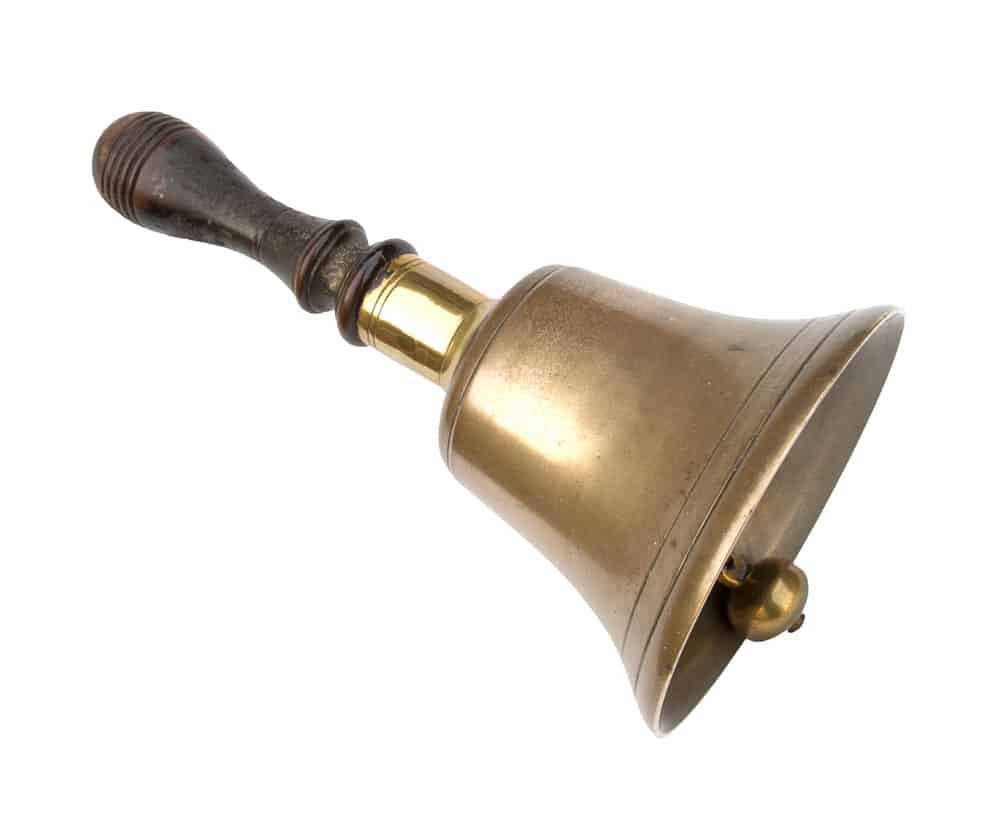
This is essentially a church bell that is found in the tower of a school. When it’s time to begin classes in the morning, change classes during the day, or dismiss students from school, the bell will likely be rung to signal these events. These began as physical bells, and even electronically-operated physical bells, but many schools have switched to an electronic bell sound that is heard through an intercom system.
Bicycle Bells
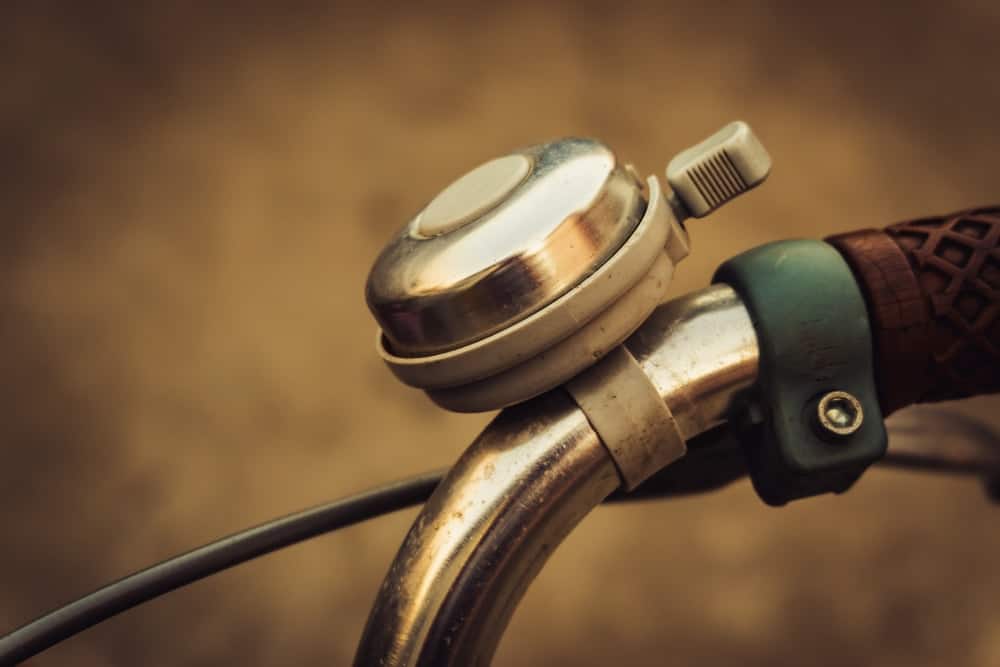
Patents for bicycle bells go back as early as 1877, and their purpose has remained the same ever since – to warn pedestrians and other cyclists that you are coming through. Some jurisdictions even require you to have these. Most often, bicycle bells are mounted on handlebars and operated by a lever that you flick with your thumb. The bell is enclosed, but inside are two loose metal discs that rattle when you hit that lever. No matter how you feel about having the equipment on your bike, it certainly beats having to yell at people.
The Doorbell

Doorbells come in many forms, although the bell itself isn’t used very commonly now, and many doorbells are sounded electronically. The basic function, however, has remained the same. When you approach somebody’s door, you press a button, and this triggers a bell on the inside of the building, letting the person know that you are at their doorstep. The first doorbells were actually mechanical and involved pulling a cord. Old doorbells also had a physical, cup-shaped bell that would sound when triggered.
Alarm Clock Bells

That classic alarm clock sound that is now programmed into most smartphones used to be generated by ringing bells that would clang together rapidly when the time was right. Commonly, these were little upside-down bowls that would sit on top of the block with a little hammer in between.
Cowbell
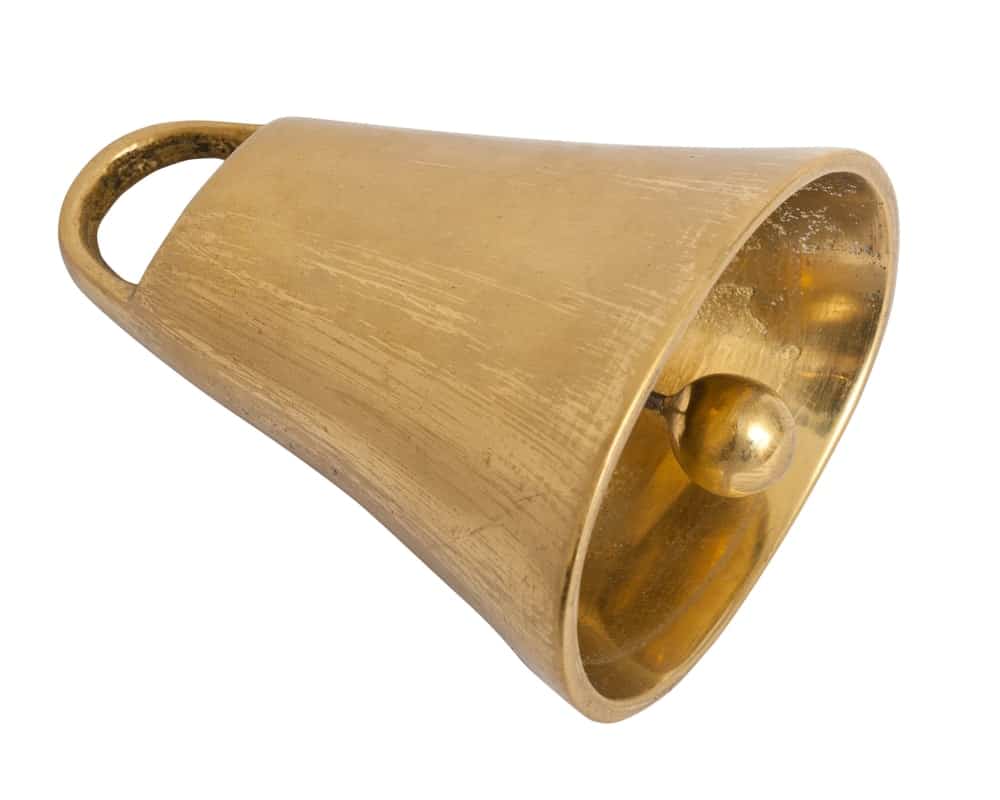
Maybe you used the cowbell at some point during your elementary music class, but the original cowbell was a tool used by herdsmen. While a wide variety of species wore the cowbell, it was used extensively with cattle. Cows that roam freely still need to be kept track of, and the cowbell helped, but it was also used to scare off predators. The size of the cowbell would likely depend on the species and size of the animal.
Unlike the traditional cup shape that many bells have, the cowbell is something like a slightly tapered square that is hollow with a clapper inside. Noise is produced when you shake the instrument. However, other cowbells are clapperless and require a mallet or a stick to generate the sound.
Bermuda Carriage Bell
Similar to the bicycle bell, the Bermuda carriage bell was rung to warn pedestrians, but you would find this bell on the floor of a vehicle. This bowl-sized bell had a plunger that extended above the bell and was operated with the foot.
Agogô

The agogô bell is a fairly old instrument that originated in Africa and it’s one that produces an extremely high note. The instrument is comprised of anywhere between two and four conical shaped or truncated cones that are all linked together by a U-shaped piece of metal. The cones on an agogô bell are sized differently, and the sound that the instrument produces will depend on which cone is hit. You can hear the agogô bell in some traditional African Yoruba music.
The Altar Bell

Altar bells are a handheld type of bell that can be a single bell or a set of bells, all of which would be linked together. They are most commonly used at Catholic churches simply to create joyful noise and give thanks to the Lord, and you will usually find them at the altar. They can be simple or intricate and are often made of brass or bronze
Call Bell

Also called a concierge bell or a service bell, the call bell is the bell that you would find on service desks and other counters where you might need to get the attention of an attendant. They are commonly seen at such places as hotels and restaurants, where they used to be attached to every table.
Chime
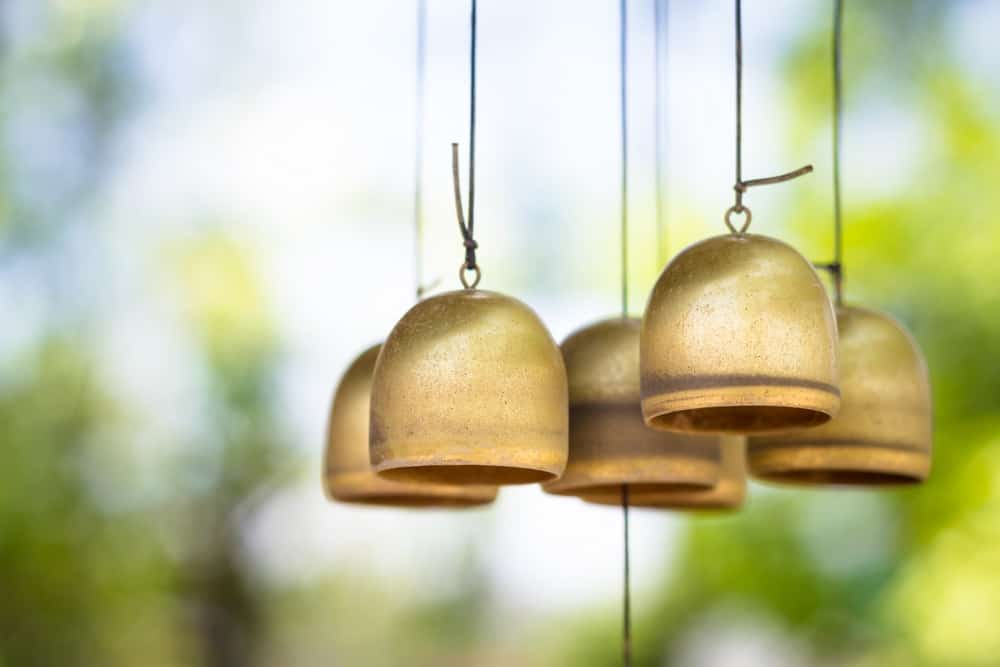
A chime is a bell instrument consisting of fewer than 23 bells in most cases. This instrument goes all the way back to 1487. Typically, bells are suspended from a bar and generate sound by clashing together, either by movement or by being struck. They also call these kinds of instruments “tubular” bells because of their shape.
Crotal Bells

Crotal bells were small, round bells that typically consisted of two halves of bronze that were soldered together. Inside would be a pea-sized ball that would bang against the metal and generate the sound. They were most commonly used on horse-drawn vehicles for the same reason that people use bicycle bells, which is to warn others that a vehicle is coming.
Dead Bell
Shapewise, there is nothing unusual about the dead bell. It’s got the tradition cup shape of most bells, but what makes the dead bell different is what it was used for. Belief in the supernatural was common during the Middle Ages, and people often attributed special powers to certain objects such as a bell. Dead bells were primarily used in England in conjunction with death and as a way to ward off evil spirits.
Electric Bell
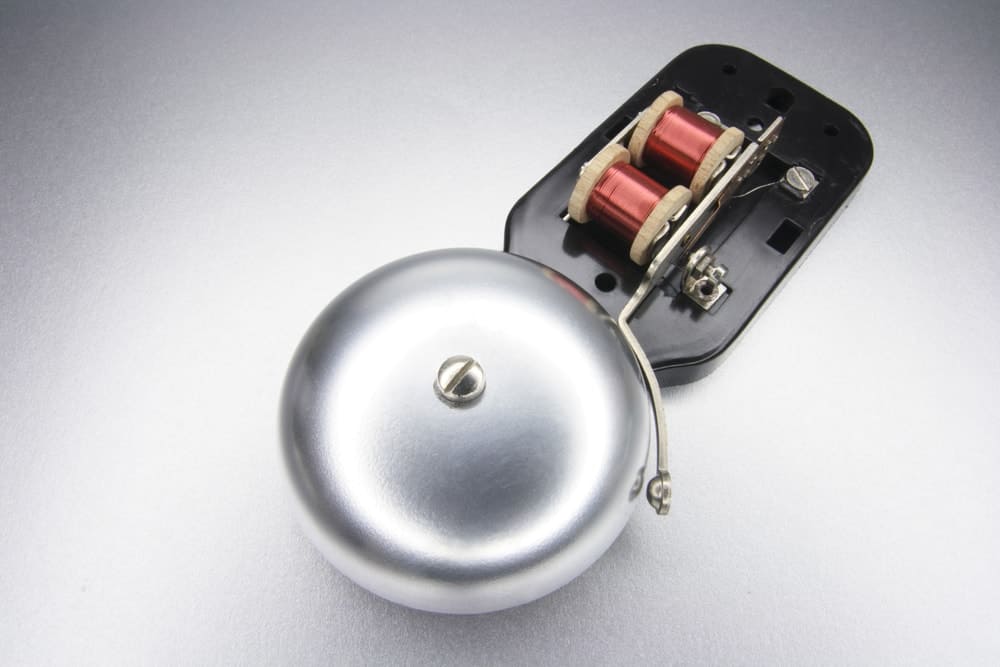
Electric bells have been used for everything from railroad crossings and telephones to schools and burglar alarms. They function by means of an electromagnet and an electric current that produces a repetitive clanging or buzzing noise. Old electric bells consisted of a round bulb and a piece of metal with a little pea-size ball at the end of it. When the electric current was applied, this piece of metal would move back and forth super fast against the metal bulb. Sometimes this is so fast that it sounds more like a buzz than a bell.
Sleigh Bells

Reminiscent of Christmas time, sleigh bells or jingle bells produce that familiar jingle that you hear throughout the holidays. The actual musical instrument consists of a wooden handle with a number of small balls attached to it that when shaken produce that classic sound. The balls are typically just pieces of sheet metal that have been bent into a sphere, and inside there is another pea-size ball that knocks against the metal when shaken.
Of course, these balls can be attached to virtually anything, and you will see them all over Christmas decorations. Historically, these little jingle bells were fastened to horse harnesses for the same reason as other bells. They warned pedestrians and other horse-drawn vehicles that you were approaching. These bells were also used to herald the approach of somebody important.
Single Sleigh Bells

While most sleigh bells come in bunches, there are single sleigh bells out there, and it’s one of many handheld bells. With a single sleigh bell, the bell itself will usually be larger, and you will find it attached to a wooden handle.
Parsifal Bell
A Parsifal bell is actually a stringed musical instrument that was designed to be a substitute for the church bell. They are constructed based on the principles of the grand piano and are rather large. Using heavy, cotton-covered hammers, you strike the strings, which will vibrate and produce sound.
Quarter Bells
Quarter bells are the bells that sound after each passing quarter on a clock. They are usually traditionally shaped, but kept hidden behind the clock. You could find these at famous clocks, such as Big Ben in London.
Standing Bell
Standing bells are also called resting bells because they sit on the ground, and rather than being open at the bottom like a traditional cup-shaped bell, standing bells are open at the top and are basically bowl-shaped. They range in size, from a few centimeters to a meter in diameter. For the standing bell to produce sound, you must strike it with a mallet. You can also produce a sustained sound by rotating a mallet along the outside rim, and this is called a “singing” bowl.
These bells are widely used for making music, meditating, and relaxing, and religion and spirituality are often in the mix. Buddhism makes use of standing bells, and some people even understand these bells as the “Buddha bowl,” “Tibetan bowl,” or “Himalayan bowl.”
Smart Doorbells

Really, the only similarity that these bells have with traditional bells is that they both contain the word “bell.” Smart doorbells are Internet-connected devices that can be paired with your smartphone to alert you of people on your doorstep, even when you are not home. Some smart doorbells even have cameras built in, so you can see who is visiting you. Other features include built in motion sensors, speakers, and microphones so you can even communicate with guests via the doorbell.



You must be logged in to post a comment.